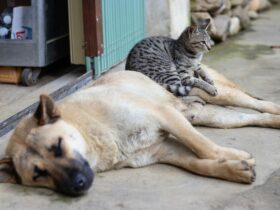Owning a dog is a rewarding experience that comes with its own set of responsibilities. From selecting the right breed to providing daily care, ensuring a happy and healthy life for your canine companion requires thoughtful consideration and commitment. This guide provides a comprehensive overview of essential dog care, including breed selection, daily needs, training, and health considerations.
Choosing the Right Dog Breed
Selecting the right dog breed is crucial to ensuring that your pet’s needs and personality align with your lifestyle. Here are key factors to consider:
1. Lifestyle Compatibility:
- Activity Level: Match a dog’s energy level with your own. Active breeds like Border Collies require more exercise and mental stimulation, while more relaxed breeds like Bulldogs may be content with less activity.
- Living Space: Consider your living environment. Larger breeds or those with high exercise needs may be better suited for homes with yards, while smaller breeds may adapt well to apartment living.
2. Size and Space:
- Small Breeds: Ideal for apartment living or smaller homes. Examples include the Pomeranian and Chihuahua.
- Medium Breeds: Suitable for most homes with a moderate amount of space. Examples include the Cocker Spaniel and Beagle.
- Large Breeds: Require ample space and exercise. Examples include the Great Dane and Labrador Retriever.
3. Grooming Needs:
- Low Maintenance: Breeds with short coats, like the Boxer or Beagle, require minimal grooming.
- High Maintenance: Breeds with long or double coats, like the Cocker Spaniel or Pomeranian, need regular brushing and grooming.
4. Allergies:
- Hypoallergenic Breeds: Some breeds, such as the Poodle and Bichon Frise, are considered hypoallergenic and may be better for people with allergies.
Daily Care Requirements
Proper daily care is essential for your dog’s well-being. Here’s what you need to know:
1. Feeding:
- Quality Diet: Provide a balanced diet appropriate for your dog’s age, size, and activity level. Consult your veterinarian for specific dietary recommendations.
- Portion Control: Follow feeding guidelines to prevent overfeeding and maintain a healthy weight. Adjust portions based on your dog’s needs and activity level.
2. Exercise:
- Daily Walks: Most dogs require daily walks for exercise and mental stimulation. The length and intensity depend on your dog’s breed and energy level.
- Playtime: Engage your dog in interactive play, such as fetch or tug-of-war, to keep them physically and mentally active.
3. Grooming:
- Brushing: Regular brushing helps prevent matting and reduces shedding. The frequency depends on your dog’s coat type and length.
- Bathing: Bathe your dog as needed, typically every 4-6 weeks, using a mild dog shampoo. Over-bathing can strip natural oils from their coat.
- Nail Trimming: Trim your dog’s nails regularly to prevent overgrowth and discomfort. Monitor nail length and trim as necessary.
- Ear Cleaning: Check and clean your dog’s ears regularly to prevent infections, especially for breeds with floppy ears.
4. Health Care:
- Regular Vet Visits: Schedule annual veterinary check-ups to monitor your dog’s health and update vaccinations.
- Dental Care: Brush your dog’s teeth regularly and provide dental chews to maintain good oral health. Regular dental check-ups are also important.
- Flea and Tick Prevention: Use flea and tick preventatives as recommended by your veterinarian to protect against parasites.
Training and Socialization
Training and socialization are key components of responsible dog ownership. Here’s how to approach both:
1. Basic Training:
- Commands: Teach basic commands like “sit,” “stay,” “come,” and “down.” Positive reinforcement, such as treats and praise, is effective in training.
- Consistency: Be consistent with commands and routines to help your dog understand and follow instructions.
2. Socialization:
- Exposure: Introduce your dog to various environments, people, and other animals to build confidence and reduce fear.
- Puppy Classes: Enroll your puppy in socialization classes to help them develop good behavior and social skills from an early age.











Leave a Reply